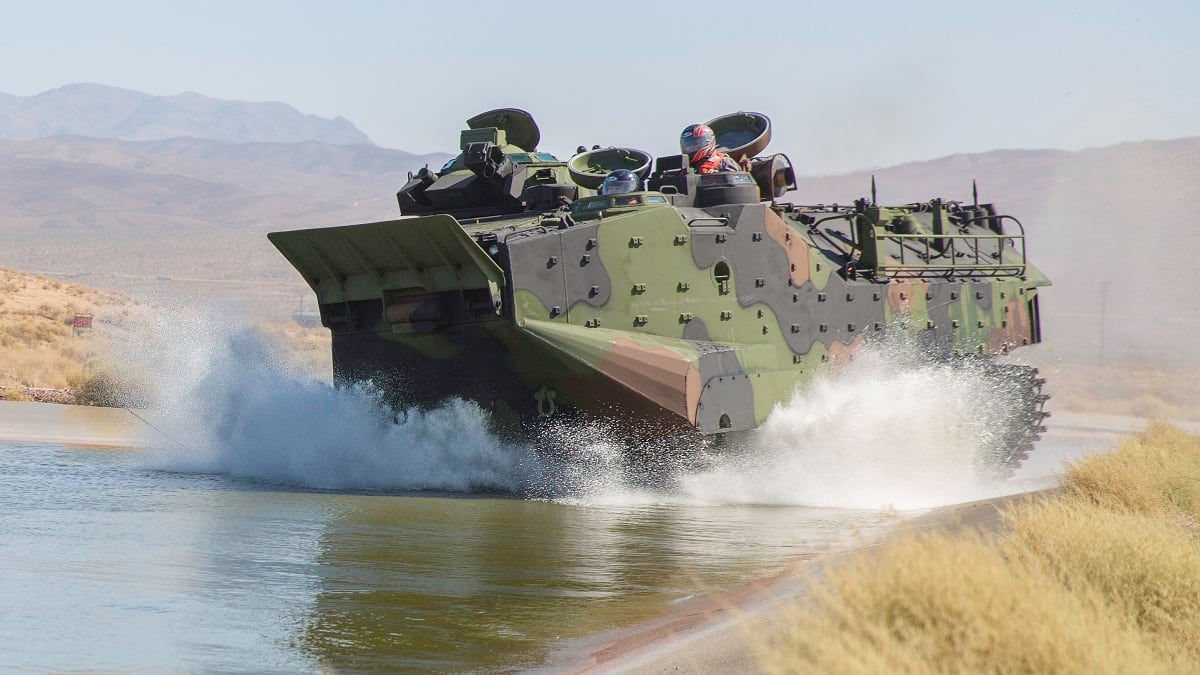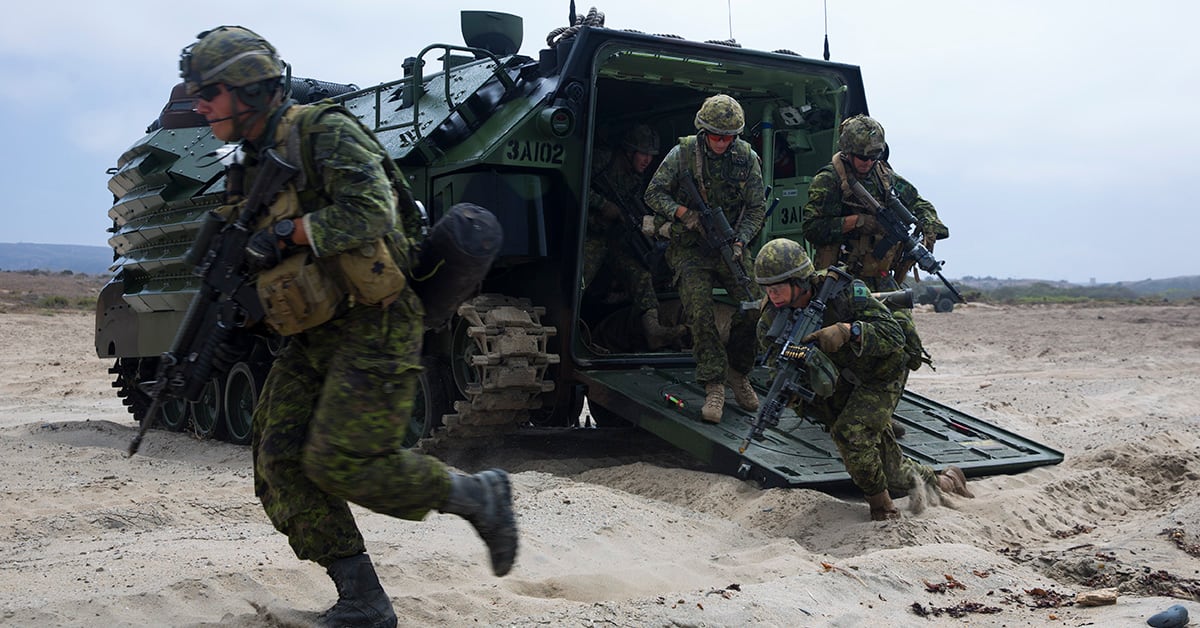MARINE CORPS BASE QUANTICO, Va. ― The winner of a contract to develop the Marine Corps new amphibious combat vehicle, the first of its kind in four decades, showcased a potential variant that would give commanders eyes on all areas of the littoral battlefield, on-board drones and targeted hand offs to any ACV in their formations.
BAE Systems guided reporters through the interior of the vehicle, on display at this year’s Modern Day Marine Expo in Quantico, Virginia, on Tuesday.
The variant isn’t one that the Marines have yet requested, but John Swift, program director for BAE’s amphibious vehicles, said the model was an effort to showcase what’s possible with the new vehicle.
Marines selected the BAE version earlier this year over SAIC’s proposed vehicle. Swift noted that decision keeps BAE as the sole company providing such vehicles to the Corps since 1941.
RELATED

They’ve got to build 30 vehicles by the end of next summer, Swift said. Those vehicles will then go through testing before modifications and the composition of the fleet is decided. Marines want at least two variants as production begins in the next two years: a turreted assault vehicle and a command and control vehicle.
As of now, the Corps’ official numbers call for 704 ACVs for the fleet when full rate production begins in 2022. That number is planned to be completed within six years, Swift said.
The composition of the fleet is still undecided, so the initial 30 vehicles delivered for testing will be basic platforms.
But that was before an announcement reported by Defense News this week that the survivability upgrade contract for the existing AAV fleet of an estimated 392 AAVs was cancelled.
The move is in line with larger National Defense Strategy aims to ramp up modernization by prioritizing money for those programs rather than legacy platforms.
Marine Corps Program Executive Office for Land Systems spokesman Manny Pacheco told reporters at this week’s expo that the early version, or ACV 1.1 outperformed expectations and delivery of the new vehicles would not take much longer than the planned upgrades, which could shorten the calendar.
The deliveries were about six months apart, he said. Meaning that the brand-new vehicles would arrives shortly after the upgraded vehicles were planned.
Swift and Pacheco said separately that the ACV 1.1 was able to both launch and recover, meaning return to ship. That wasn’t an expectation until later versions, which sped up the capability development of the new vehicle, giving the Marines other options in how they would pursue modernizing the fleet.

In a question and answer posting about the ACV by the Marine Corps Combat Development Command, officials at the time said they would continue the upgrade program even if the early ACV versions achieved a “self-deployable capability.”
The posting noted that the upgraded AAVs will “address capability gaps that need to be closed as soon as possible.”
It went on to say that the aged AAV fleet also accounts for one-third of the Corps’ lift capacity and “will need to remain operationally effective in the force until their replacements are procured.”
Later in production there’s also interest in building a recovery ACV, Swift said.
The new ACV has a host of differences and capabilities not on the more than 40-year-old AAVs but most immediately noticeable is it is an eight-wheeled vehicle. Gone are the treads of the tracked AAV.
When asked about tire performance by reporters, Swift said that in testing the ACV was able to travel another 30 km with three debilitated tires.
The same questions and answers list had several reasons for wheels over tracks:
Greater mobility in complex, littoral terrain;
• Increased IED protection (2X).
• Reduced fuel consumption (<1/2 fuel consumption).
• Greater reliability (improved mean time between failure).
• Reduced signature and smaller profiles (a critical survivability factor in a G-RAMM environment).
• Increased dispersion of personnel among more vehicles (a critical risk reduction factor).
• The design margins to allow for a family of vehicles of various configurations (personnel, command, and recovery variants; potentially others ie: indirect-fire, anti-armor in the future).
• Significantly reduced cost.
• Less technological risk.
• Nearer-term availability.
• Greater weight growth and freeboard capacity.
Todd South has written about crime, courts, government and the military for multiple publications since 2004 and was named a 2014 Pulitzer finalist for a co-written project on witness intimidation. Todd is a Marine veteran of the Iraq War.



